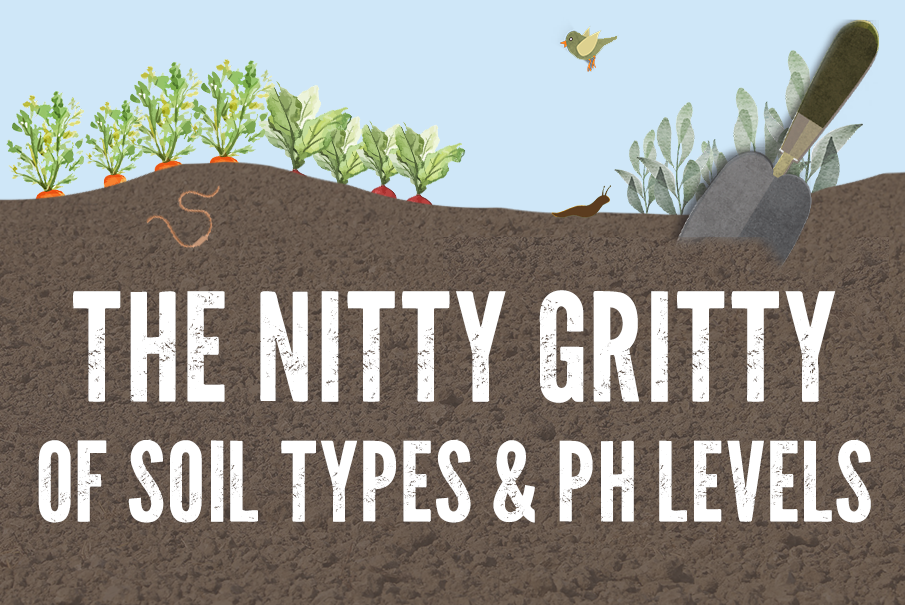The Nitty Gritty of Soil Types and pH Levels

At some point or another, we’ve all looked at our crops and wondered where it went wrong. We’ve wondered whether it was the spacing, the seed variety, the watering or weather conditions.
Sometimes the reason can be found at the most foundational level - the soil. But just because your soil is not top of the crops does not mean that you have to give up all hope. There are some easy steps you can take to improve your plants growth and vitality. We’ve shared some of our top tips on how to make your soil work for you below.

The 3 Main Soil Types
There are three main soil types - clay, silt and sand - and then a few less common types - such as chalk, stone and peat.
The quickest way to find out what soil type you have is to simply take a handful of moist soil and squeeze it until it is the size of a small ball. Rub two fingers across the surface of your soil ball and inspect the texture. If it is gritty, it is likely a sandy soil, silky and it is probably a silty soil and slippery could mean you have a high clay content to contend with. Still unsure? Don’t be afraid to ask your fellow allotmenteer or neighbour.
If you’d like a visual comparison, Gardeners’ World has some good soil images here.
What does the soil type mean for my plants?
Clay
This might be the hardest soil type to work but it is also one of the most rewarding. It holds on to nutrients and can accommodate most seed varieties. The issue is usually found in getting your plants started. To overcome these challenges, we’d suggest:
- Timing it right - when digging over, aim for late Autumn or late Spring when the soil isn’t too wet and before it dries out. Use a sturdy garden fork to break apart lumps and pull weeds
- Once you’ve dug around 30cm deep, incorporate some peat free compost
- If weeds persist, we’d recommend some weedban
- To encourage your plants, a consistent supply of mulch will help no end
Silt
For mineral loving plants, silty soil will see you through. It has a lightweight composition and it’s great for retaining water and nutrients. The struggle most gardeners experience with silt is that when wet, it can take on a soapy texture and become compacted. To mitigate this challenge, we recommend:
- Adding compost and manure before planting to create a crumb formation
- Avoid treading on the beds to prevent compacting the soil
- Add a little clay to improve the soil structure
Sand
In opposition to clay, this soil type is extremely manageable, but puts on a poor performance for nutrient retention. Sandy soil can be inhospitable for some crops, so if you want to improve the odds:
- Add manure, garden compost, leaf mould or other organic matter
- Deal with shabby water retention levels with a healthy dose of mulch around your plants, especially after a heavy rainfall
It’s in the pH
Another common obstacle which crops up with failing vegetables is either having soil too high in alkalinity or acidity. To find out where your soil sits on the scale, simply pick up a pH Level Test Kit here. All crops require different variations of pH in their soil. This kit will not only enable you to find the pH level of your soil, but it also comes with a handy information sheet that tells you what levels you should be aiming for with each plant.

The good news
No matter what soil type you have, there are workarounds to improve your harvest odds. From incorporating organic matter by using a garden composter to introducing high quality peat free compost, we’re confident that with the right combination approach, the sky is your limit.
Have you tried tailoring your gardening approach to your soil type and pH level? Let us know in the comments! We’d love to hear what you tried & how you got on.
If you liked this blog, you might also enjoy reading ‘To Dig or Not To Dig’.